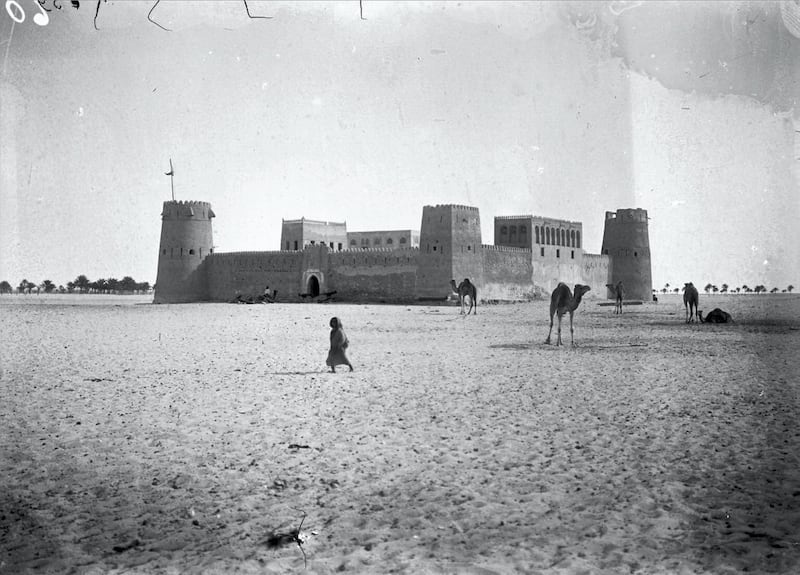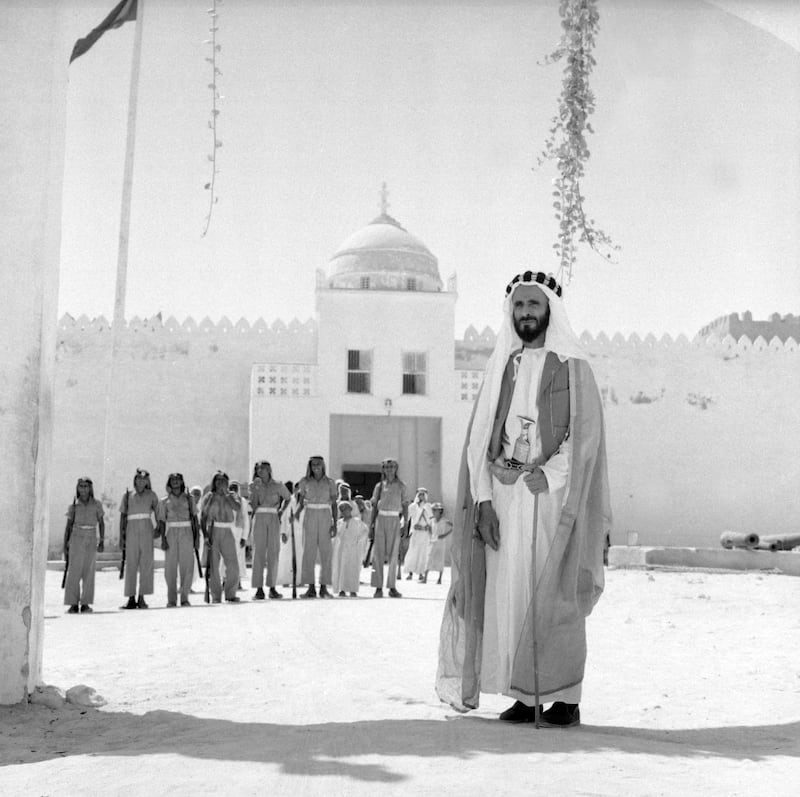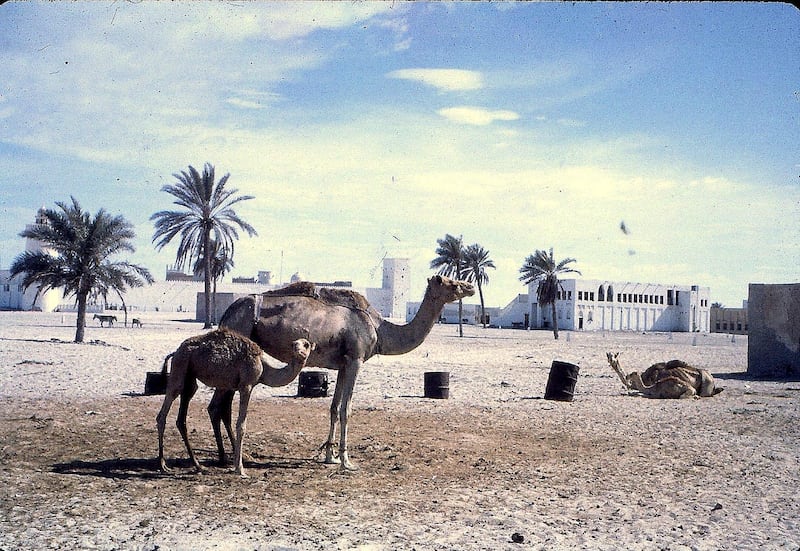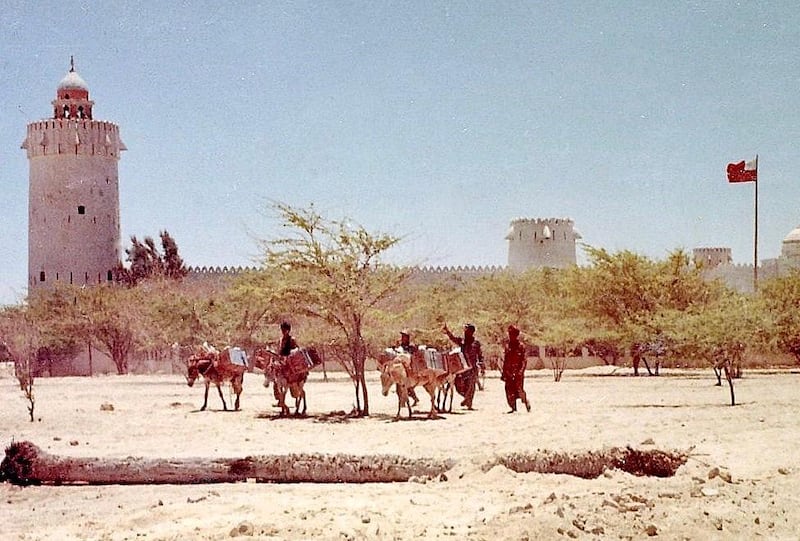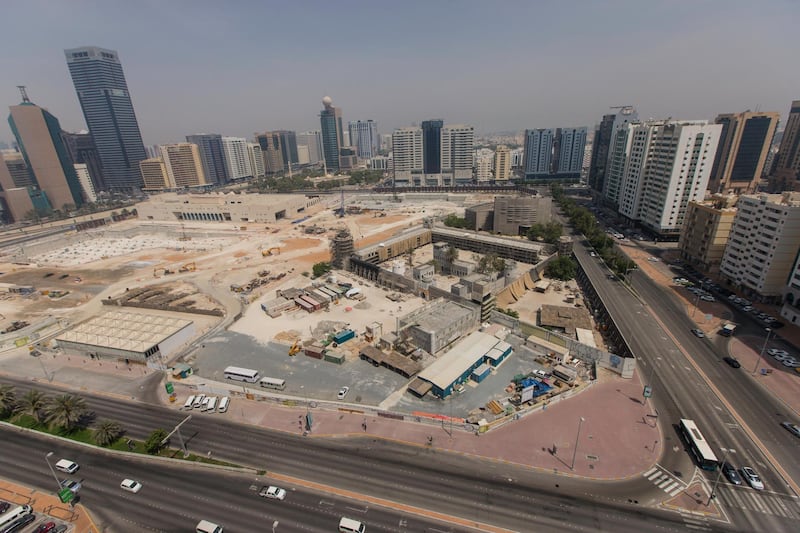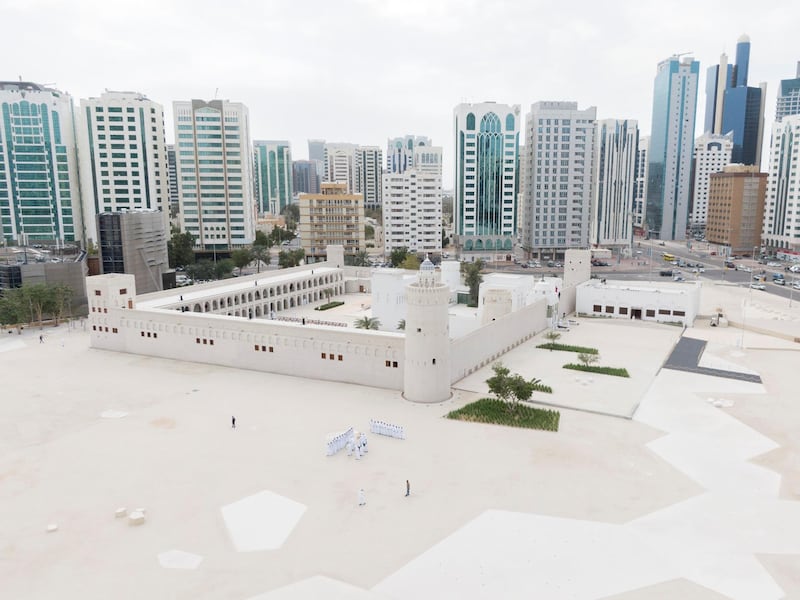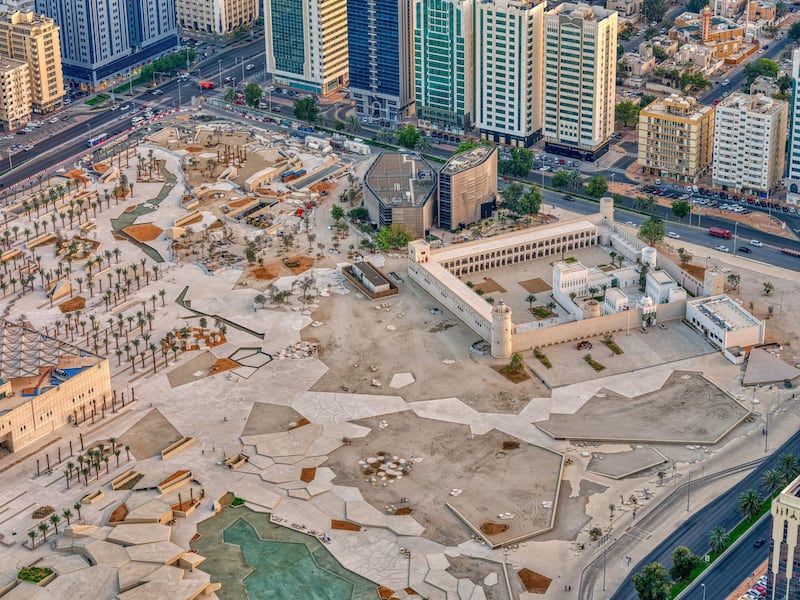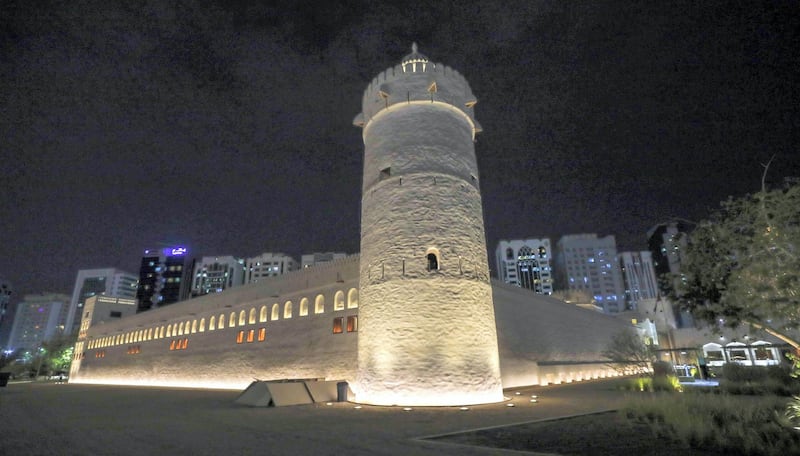They are just some of the buildings that define the UAE. But what is the story behind them? In the sixth and final part of our summer series celebrating the country’s architecture, we look at the history behind Qasr Al Hosn in Abu Dhabi.
In the beginning there was a tower, alone amid the sandy wastes and guarding the only source of water that made the difference between life and death in those times.
Today that former wasteland has been transformed into the bustling city of Abu Dhabi and the capital of the United Arab Emirates. The tower still stands, part of Qasr Al Hosn, the palace fort with a story that is central to the country’s history.
“We hear the story of the hunting party that came from Liwa to Abu Dhabi island and, as legend has it, found a potable water source,” says Mark Kyffin, head of architecture for Abu Dhabi's Department of Culture and Tourism.
“So a watchtower was built to defend that water source and from that it evolved into the fort, which evolved into a palace and then the Centre for Documentation.
“Then came the era of restoration, which is one that I was part of from 2007 onwards.”
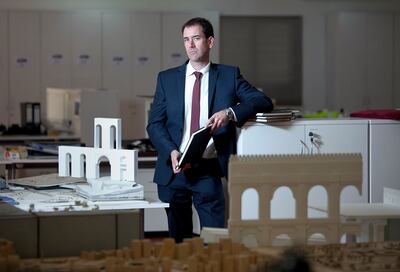
That potted history of Qasr Al Hosn, by far the oldest building ― or at least part of it ― in Abu Dhabi emerges from the 10 years Mr Kyffin worked with a team of experts to conserve the historic structure for the future.
It has also given him an insight into the unfolding development of the structure, and of the construction methods used by the men who designed and built what was the home of Abu Dhabi's rulers for nearly two centuries.
First came a lone watchtower, to mark and protect where precious drinking water could be found, uncontaminated by salt from the sea that surrounded the island.
It was built, Mr Kyffin says, about 1760, according to oral histories, and at the start of the reign of Sheikh Dhiyab bin Isa Al Nahyan. That earliest structure was round and made of coral stone with crenellations at the top.
We know this because it survives to this day.
The confirmation that the north-east tower on the inner fort was probably the original came with the most recent conservation work, which was completed in 2017.
The interior was lined with concrete in the 1980s to support a spiral staircase, but once removed revealed the much older coral stone, cut by divers in blocks and then left to harden in the sun. Where such techniques were learnt is not known, as was the burning of the chippings to create a powder that could be mixed with water to create mortar.
Access to the tower would have been by a rope ladder. Windows and doors had been cut, probably when the tower was incorporated into the 19th-century expansion.
The fort ― al hosn in Arabic ― was expanded, beginning about 1793, by Sheikh Shakhbut bin Dhiyab, the first ruler to make it his home. The four towers and walls can be seen in the first photographs taken by Samuel Zwemer in 1901 and Hermann Burchardt in 1904.
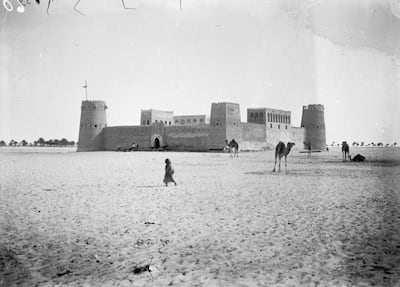
Although this structure appears to follow the design of the inner fort created in the expansion of the 1940s, conservation revealed that most of this had been replaced by concrete in the 1980s. Intriguingly, though, the old north-east tower had been left intact ― possibly because its historic importance was recognised even 40 years ago.
“It always strikes me [that] no matter how much the inner fort changed, that one watch tower to this day remains unchanged. It's almost as if there was something precious about it,” Mr Kyffin says.
When conservation started in 2007, “we saw a homogenous kind of architecture all rendered in white”, Mr Kyffin says. “And we didn't know at that point, what was from what era and how much [original] fabric was there."
It was clear though, that the inner fort was mostly a reconstruction. Why?
“Because of the spans of the room of the inner fort were up to six, seven metres and traditional Emirati vernacular architecture uses the chandal or mangrove pole.
“They will be only three to 3.3 metres wide because the poles forming the beams can’t be grown any longer.”
In 1939, Sheikh Shakhbut bin Sultan, who was the ruler at the time, began a huge expansion using the revenues from new oil concessions and providing much-needed work for his people during the years of the Second World War.
This construction marks the “Al Qasr’’ era, when the building abandoned its defensive role and became, instead, the centre of governance and permanent home of the Al Nahyan clan.
Here, again, the work carried out in the 1980s led to layers of concrete being added, but investigations revealed that much of the original walls from the 1940s were intact.
The original plan for restoration considered incorporating modern comforts such as air conditioning into this part of the building to turn it into a museum.
But the discovery of the older walls, and the traditional building techniques still in use nearly 80 years ago, promoted a rethink and the restored structure now highlights this.
“It allows visitors to understand that the building was so intelligent it provided natural cooling through the thickness of its walls and the way in which it channelled the breeze,” Mr Kyffin says. “The width of the rooms was very narrow, but the ceilings were very high.” This creates what is known as a thermal stack, he says, where the hot air rises and pulls in cooler air behind.
There was one further phase in the evolution of Qasr Al Hosn. With the accession of Sheikh Zayed in 1966, its old role as royal home and seat of the ruler ended.
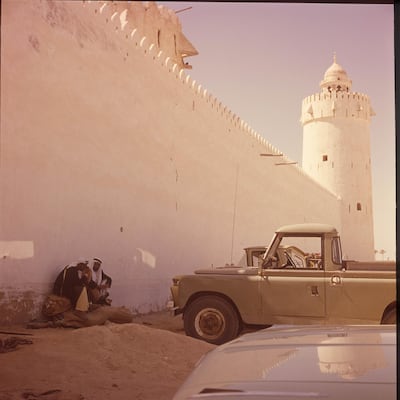
Instead it became home to the Centre for Documentation and Research, now called the National Archives, with arches enclosed in aluminium frames and modern windows and concrete floors laid down. In the early 1970s, the National Council Chamber had been added, outside the main entrance.
By the late 1990s, both the archives and the National Council had gone. The building could still be visited by the public, but it was clearly in a state of disrepair and in early 2007 the decision was made to close it for conservation.
The aim, in what was to be a decade-long project, was to preserve each of the different phases of the building as closely as possible to the time when they were constructed.
The watchtower has been restored as far it possible to the 1760s, while the inner fort reflects its appearance in the 1980s, Mr Kyffin says, although with enough elements to serve as at least a memory of what was there before.
“The council chamber is reinstated to how it was in the the '70s and ‘80s. And the outer palace, we took it back as much as we possibly can using the charter of conservation to how it appeared in the 1940s. And that charter basically says you do as little as possible, but as much as is needed.”
While much has been learnt about the history of Qasr Al Hosn, much has still be to be discovered. The architects and builders over more than two centuries remain a mystery, even up to the 1940s.
Mr Kyffin, though, sees a guiding hand in the building as it stands. “It's too well articulated for it not to have been preconceived as a drawing, as a plan.”
"It's got an air of proportion and beauty to it, although it's pragmatic in terms of its functionality. It does it all.”
Qasr Al Hosn has probably reached the final stage of its evolution. Mr Kyffin says "the building is, I think, cherished and loved in the current state because it tells the story of the modern city we see today”.
A version of this article was first published on September 11, 2022
